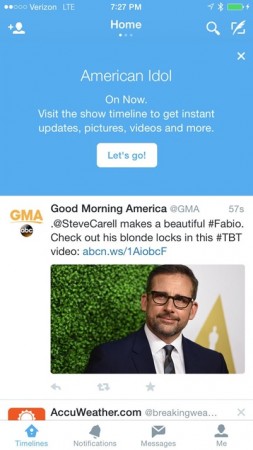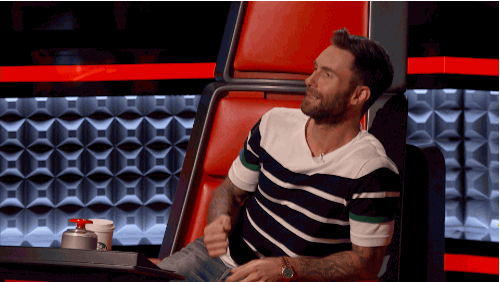Stay aHead: Second screen social – lessons from 'The Voice'
Social media certainly isn’t reducing the amount of TV we watch. In fact, in an age of series link and catch-up services, social media has become a key tactic to ensure people join the original broadcast.
With the traditional day-after water cooler chat of our favourite shows moving to real-time discussions online, we’ve seen the format of TV shows change to keep up. Whereas a few years ago, the sight of a pre-defined hashtag seemed alien popping up at the start of show, now we’re actively searching for it so we know how to join in.
Twitter TV Timelines

Described by Mashable as a ‘bold TV experiment’ Twitter is embracing second-screen viewing like never before. Its latest offering – TV Timelines – is a bespoke feed designed to encourage interaction and conversation.
Twitter is listening – if it can work out that you’re watching a designated show, you could be invited into a dedicated stream. In TV Timelines, you can choose between Highlights, Media and All while the rest of your Twitter feed is tucked away elsewhere. It can even pre-populate your tweet with the show’s hashtag.
While it’s not clear how moderated the content is, it is obvious that Twitter are taking steps to gain control of this branded conversation.
The Voice and GIF Keyboard

One show leading the way with social integration is the American version of The Voice, not least with its partnership with GIF Keyboard – GIFs of key moments will appear in the app’s Explore panel, encouraging users to make and share them quickly and easily.
Other social integrations include iTunes downloads (The Voice was the first televised singing contest in the US to allow iTunes sales to count as actual votes) and its interactive second screen app. The Voice Official App is customised for each stage of the show and gives fans ever-increasing influence – a recent addition being a tap-to-tweet #VoiceSave where viewers can vote to save their favourite contestant via Twitter.
Second-screen social is mostly talked about in relation to television, and it’s not just talent shows getting in on the act. For example, Channel 4’s ‘NHS: 2 Billion a Week and Counting’ encouraged Twitter debate and displayed selected tweets during the broadcast.
It only takes a little creative thinking to see the potential of second-screen initiatives for brands, especially when it comes to events. Social is the perfect avenue to add value and interest for both on-the-ground and digital participants.
Here’s how to make it work for your brand:
- Constantly innovate: Don’t sit back and relax just because one initiative has worked. How can you take your audience to the next step or better frame existing conversation?
- Give them what they want: The Voice knows where its audience is on social and the sort of content they love to share: GIFs = Tumblr. There is huge value in understanding this as it will dictate the sort of content you should provide to fit seamlessly into existing conversation.
- Remember the Golden Triangle: Shows such as The Voice understand that their audience responds well to three things: interactivity, live discussion and direct influence over events. Nail these elements and you’ll be looking at an active and engaged audience.